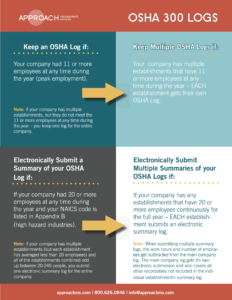Preventing workers’ comp claims
It’s time for our yearly look at the top causes of workers’ compensation claims, based on the thousands of claims we managed for Washington state employers in 2020.
The best employers strive for a safety culture in their workplaces, allowing every employee to go home safe. They also know that the reducing claims is the single best way to lower their cost of workers’ compensation insurance.
Ramp up your safety!
Register now for our Safety Brain Trust in April
That’s why they keep Accident Prevention Programs (safety plans) updated to reflect:
- The specific types of hazards employees may encounter.
- All the training programs needed for the work being done.
- An onsite inspection process, in which workplaces and job sites are regularly walked to identify and fix any potential hazards.
- A Hazard Assessment for all job tasks to assess hazards and eliminate or identify required Personal Protection Equipment.
- A written record of safety meeting topics and attendees, or minutes from your safety committee.
- An active and implemented Safety Communication (Enforcement) Program.
Safe employers also regularly discuss safety with their workers, such as with Toolbox Talks like this Safety All Day article. It’s important to discuss safety and provide safety reminders often because, as you’re about to see, the majority of workers’ comp claims are caused by a momentary lack of attention or concentration.
Top Causes of Workplace Claims in 2020
Claims do happen, though, and three areas cause more than half of the injuries and resulting claims in the industries represented by Approach.
The majority of workers’ comp claims are caused by a momentary lack of attention or concentration
Strikes
Each year, the most common cause of a workers’ comp claim for our clients is “Struck by slipping handheld object.” In other words, dropping something you were carrying or a tool that you were using. This simple type of mistake caused more than 1 in 10 claims last year, injuring hundreds of workers.
If we include all types of “Struck by” injuries, including falling and moving objects, they account for more than 25 percent of claims. This was by far the biggest category of claims during 2020.
Overexertion
It’s all too easy to pull a muscle, which is what makes the sprains and strains of overexertion so common. While this is our #2 cause of claims, the National Safety Council reports that overexertion is actually the #1 cause of missed days from work – making it a major risk factor for poor recovery and difficult claims.
Falls
Nearly as common as overexertion, falls were responsible for 17% of claims last year. Falls can also be very serious — sadly, 10 workers died in Washington state in 2020 as a result of a fall, according to L&I. Slips and trips are included in this category and can also be deadly, as they were for two other workers in the state last year.
Top causes of claims for your company
Now that you know the industry trends, you have two sources of information to take a closer look at your own company:
- OSHA 300 log
Every company with 11 or more employees is required to keep an OSHA 300 Log of Work-Related Injuries and Illnesses.
Learn how to update and post your OSHA 300 log in 2021
Fields E and F of the OSHA 300 can be useful for spotting trends in your own workplace. They can help point out if multiple injuries have occurred in a certain location. or if the same types of injuries are happening over-and-over.
Download the Approach guide to OSHA 300 logs and filing
- Approach monthly report
As an Approach client, you receive a monthly composite report from us with detailed information on your claims. The charts and graphs in the report can help you identify:
-
- Days of the week with higher accident rates
- Accident-prone job titles or classifications
- Injury types resulting in higher claim costs
Learn more about your monthly reports from Approach
With the OSHA 300 and your monthly reports, you can get a complete view of the locations, job titles, days, or injury types that may be leading to increased claims at your business. And, let our top 3 categories be a reminder to always look out for workstations or work practices that could lead to strikes, strains, or falls.
Need help? Contact Approach for your annual safety review. Or, sign up to attend our April Brain Trust, focused on the Summer Safety Ramp-up.

